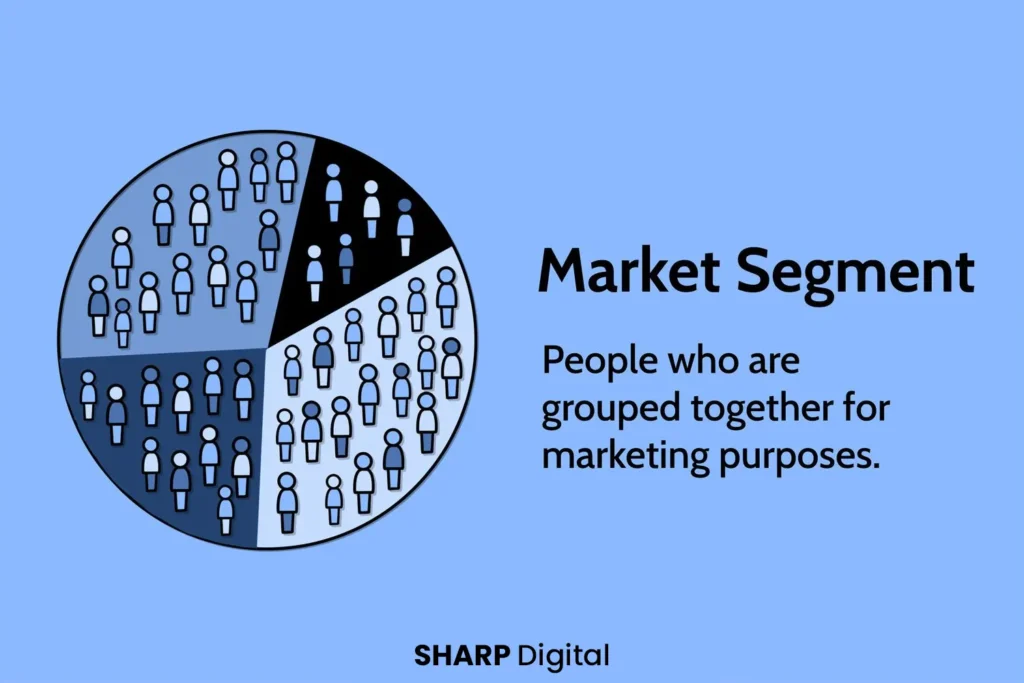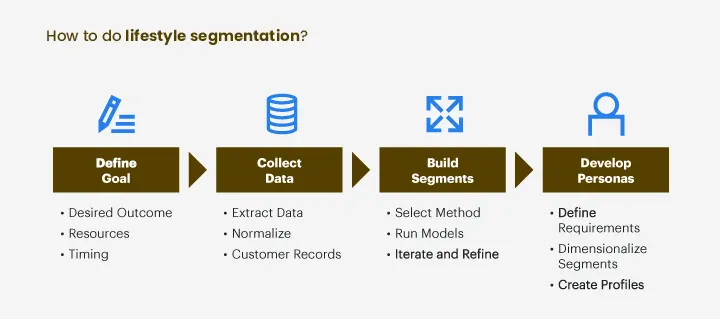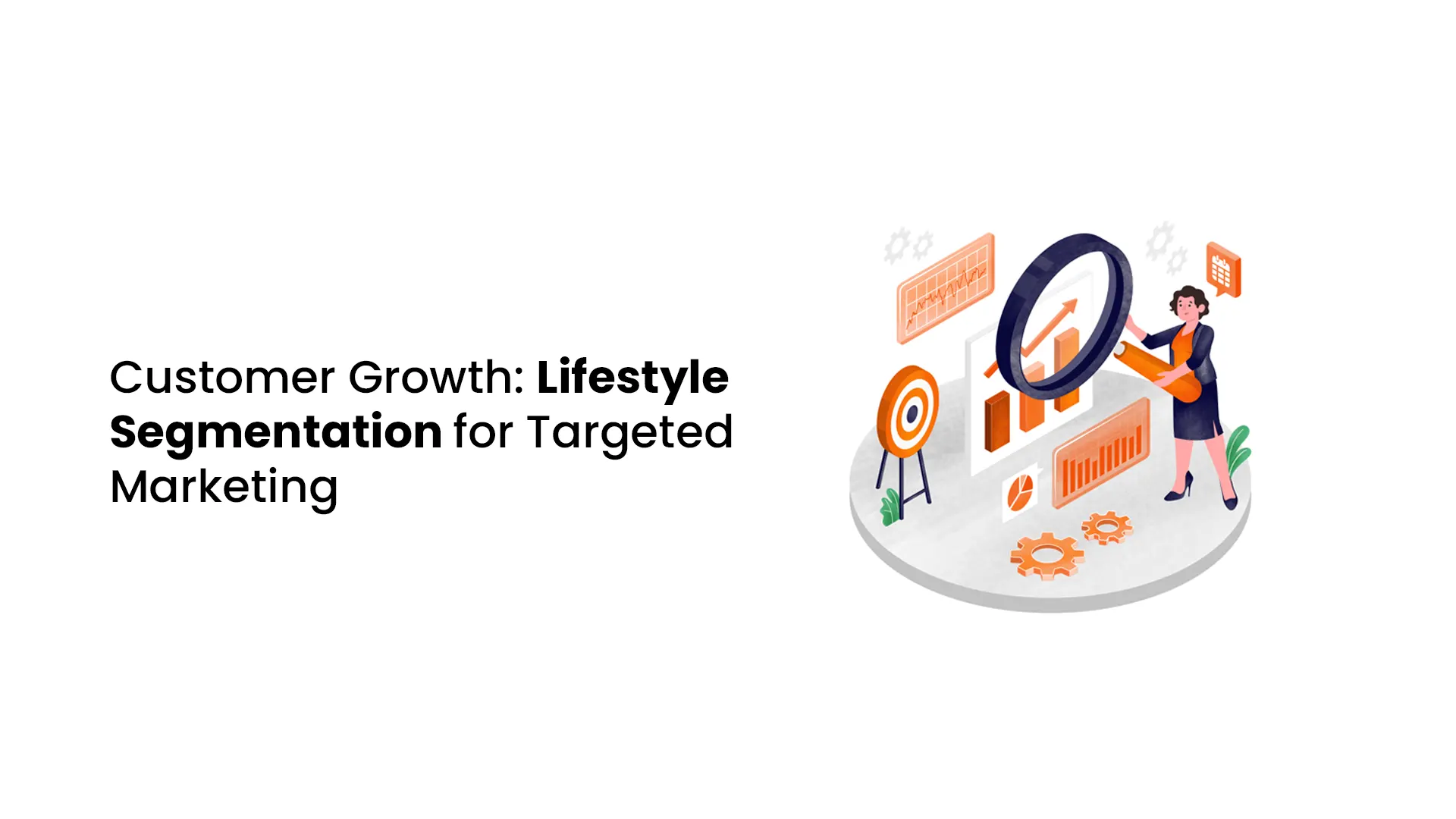Customer Growth: Lifestyle Segmentation for Targeted Marketing
Marketing feels like guessing sometimes huh? Like you’re just hoping the right person sees the right message. Problem is, a broad approach doesn’t really work anymore. What if you could get a grip on why customers do what they do? That’s what lifestyle segmentation is about. It’s not just about who your customers are, but why they choose the things they choose. This post breaks down lifestyle segmentation. It shows how it changes your marketing game and grows your biz by connecting with customers on a more personal level.
Think about it perfect marketing messages that just click with your target audience. That leads to more action, customers sticking around, and better sales. It’s possible with lifestyle segmentation. It’s a way of understanding customers by looking at their hobbies, what they like, what they think, their values, attitudes, and personalities. Forget just looking at age and income. We’re diving into psychographics to really get what makes your ideal customer tick and how to reach them best.
Are you over generic marketing that does okay but not great? Ready to step up your campaigns and make real connections? This blog is your guide to mastering lifestyle segmentation. We’ll look at how it goes further than basic info. It’s a solid way to understand customer’s lives, and how it can boost your marketing. Get set to really get your audience and make better marketing plans that actually grow things. Let’s change your whole approach to engaging customers.
The Power of Understanding Your Audience
In marketing knowing your audience it’s not just nice it’s a must. Old ways like age and location? They don’t always cut it. We’re gonna see how lifestyle segmentation helps you get to know customers better, like real personal level stuff not just the basics. We’ll talk about how this method lets you make better marketing plans for real results. Let’s see what lifestyle segmentation is and why its important now.
What is Lifestyle Segmentation?

Lifestyle segmentation it’s when you split up a market by how people live. It’s not just age or money. It looks at what they do what they like what they think what they value their feelings and their personality. It’s like trying to see how people live what matters to them what makes them buy stuff. This helps companies make really detailed marketing that speaks to peoples needs. It’s about going deep to understand why people do things.
Old way of segmentation groups people by things that are easy to measure like age. Lifestyle is a wider look. Demographics can tell you who people are. Lifestyle shows why they buy. Like say you got lots of customers who are women 25-35. Demographics tells you that. But lifestyle might show that a group within them care about health sustainability and like being outside. With that knowledge you can make better marketing.
Lifestyle looks at a bunch of things like:
- Activities: What they do with their time. Travel sports reading or volunteering. What they do shows what’s important to them.
- Interests: What they love doing. Technology art fashion or cooking. What they’re into shows what they pay attention to and where they put money.
- Opinions: What they think about big stuff like social political and money issues. Opinions show what they believe in and how it impacts what they choose.
- Values: What’s important to them. Family work freedom or feeling safe. Values show what motivates them.
- Attitudes: How they see things in general. Are they happy sad traditional? Attitudes show how they react to different things.
- Personality Traits: If they are shy outgoing adventurous or careful. Personality shows how they act.
If you look at all of this marketing people can make really detailed lifestyle groups for better targeting. That’s how you make your brand connect with the audience.
Lifestyle segmentation gives you a way better view of customers than just basic info It’s about knowing what makes them tick This deeper knowledge means way better marketing campaigns that actually work Let’s dig into why this is so important and how it helps you.
Why lifestyle segmentation matters for you?
Lifestyle segmentation gives you a way better view of customers than just basic info It’s about knowing what makes them tick This deeper knowledge means way better marketing campaigns that actually work Let’s dig into why this is so important and how it helps you.

Improve Targeting Accuracy for Marketing Campaigns
Big plus of lifestyle segmentation is it seriously improves your targeting. You get to know their activities, what they like, opinions, and values. So, you can make your marketing messages speak to them directly Instead of sending out general ads, you can make super specific ads that fit each lifestyle group. This means less wasted money and a better chance of getting the right message to the right people at the right time
Imagine you’re marketing a fitness app. With just age data, you might target everyone 25-35 But lifestyle segmentation shows you different groups within that age Some might be into health, outdoor stuff and community. So, you can make ads that highlight how your app fits their lifestyle. This approach makes your marketing budget work way better
Enhance Customer Engagement and Brand Loyalty
When your messages actually connect with people, it’s more than just selling stuff Lifestyle segmentation helps you understand what motivates your customers so you can make messages they care about. This creates an emotional connection and builds loyalty. When customers feel like you understand them they’re more likely to stick with you talk you up and become real fans
Think of a brand that sells eco-friendly products. If their customers value sustainability they can share content that shows their commitment to the environment. This hits home with those customers and builds a stronger connection. It’s not just about selling; it’s about building relationships based on shared values This is how you build a brand that actually matters to them.
Increase Conversion Rates by Reaching the Right Audience
Marketing goal is conversions like sales or signups Lifestyle segmentation helps a lot it gets your messages to the right people at the right time. When you talk directly to what your audience cares about your marketing works better. Targeted marketing makes people more likely to buy.
When your messages match their values and life it feels personal. It’s not just ads but real talk. If you’re selling to busy people who want to save time show them how your product makes their day easier. This makes your product more appealing. So, right audience and right message key to sales.
Implementing Lifestyle Segmentation: A Step-by-Step Guide
It sounds hard but it’s doable with the right plan. This part shows you how to find your target audience and use data for better marketing. We’ll go step by step on a lifestyle segmentation plan.
Identify Your Target Audience and Collect Data
First find your target audience. Start with basics: who is your ideal customer. Use current data like their age, what they bought and what they do online. Then you need life style data it’s harder to get.
- Surveys and Questionnaires: Ask about their lives what they like value feel. Use both multiple choice and short answer questions to get numbers and details.
- Social Media Monitoring: See what they talk about online what content they engage with and brands they like.
- Website Analytics: Check site data see what content and products they like. Also see how they use your site.
- Focus Groups: Have group chats get details on what they like want. Data can’t give you this insight.
- Customer Interviews: One on one talks to learn about their lifestyles and buying habits.
Using different data methods shows you the whole picture of your customer. This helps segment data and make a powerful plan.
Analyze Data to Create Lifestyle Segments
Okay so you got all your data. Cool. Now it’s time to dig in and make some segments that actually mean something. This needs a brain, some data skills, and good ways to see what’s going on
- Data Cleaning and Prep: First things first, you gotta clean up the mess. This means removing the double stuff, fixing mistakes and making sure everything looks the same. Think of it as organizing your closet.
- Stats Time: Time for some math. Use stuff like cluster analysis and factor analysis. This groups people with similar lives. It helps find the patterns that turn into your segments.
- Segment Profiles: Now for each group you made write down everything you know. What do they like what do they do, what makes them tick? This profile is what you will use to do all your marketing.
- Make it Visual: Use charts and graphs to show your groups. Pictures help everyone see the segments, even if they are not data people. Gotta make it make sense.
Using different tools and methods to look at this data helps make sure it’s right and also super helpful later when you start marketing and building your brand.
Develop Tailored Marketing Strategies
Ok, now that you know who you are talking to, you can make a plan for each group. It’s all about talking their language.
- Make the Content: Create stuff that speaks to each group directly. It needs to fit their needs and likes based on the profile you made.
- Pick the Right Spot: Decide where each group hangs out. Is it on social media? Email? Maybe Google? Or is it with influencers? Pick the right spot.
- Speak Directly: Use words that hit home with each group. Make sure your message makes sense to them and gets them going.
- Test it Out: Try different things and see what gets a response. Keep testing to know what does not and what does work.
- Map their Path: Think about each step your customer will take from first hearing about you until they buy. Make sure it all lines up with what they need.
By targeting your marketing you use your money smarter, get more people buying and make people really love your brand.
Challenges and Ethical Stuff
Lifestyle segmentation ain’t perfect. It’s got problems like privacy and ethics. Gotta be careful when figuring out what people like. It’s about respect and trust. Let’s break it down.
Data Privacy Worries
Collecting info on people’s lives can get creepy fast. Gotta be responsible with this stuff. We’re talking GDPR and CCPA rules.
- Transparency: Tell people what data you grab and how you use it. Keep your policies clear.
- Consent: Get a solid “yes” before taking data. Let people opt out anytime.
- Security: Protect data from hackers and leaks. Invest in security tech.
- Anonymization: Hide people’s identities where you can. Keeps their data private.
- Data Minimization: Only grab what you need. Cuts down on misuse risk.
Being good with privacy builds trust and shows you’re not shady.
Hard Data Collection
Getting lifestyle data is tricky. It’s not always clear cut or easy to measure. You need some serious data skills.
- Resource Allocation: Put enough money and tech into collecting data.
- Expertise: Hire data pros or get an agency for help. You need the right know-how.
- Data Management: Keep data clean and relevant. It’s crucial for good analysis.
- Continuous Training: Teach your team about data analysis. Always be improving.
- Tool Implementation: Use the right tools. It helps with accuracy.
Tackling these issues makes the data stuff better. You get more accurate insights.
Ethical Data Use and Responsible Segmentation Practices
Besides data privacy, think about ethics when segmenting. Using lifestyle to exploit or discriminate is wrong. Marketers need to be responsible and ethical to avoid harm. Good marketing and respect for customers are key.
- Avoid Discrimination: Watch how you segment. Don’t create groups that discriminate.
- Fair Representation: Make sure campaigns represent all customers. Use segmentation to be inclusive.
- Honesty and Transparency: Always be honest in marketing. Build trust by being transparent.
- Beneficial Use: Use segmentation to help both your business and customers. Add value and personalize for customers.
- Regulatory Compliance: Follow all laws and rules. Stay updated on data privacy changes.
- By being ethical, businesses show they care. This builds trust and keeps brands strong.
Embracing Lifestyle Segmentation for Marketing Success
Lifestyle segmentation helps understand customers better. It goes beyond basic info to target them personally. It leads to better marketing. Use this to change how you engage with customers and see better results.
With lifestyle segmentation, you improve targeting, engagement, and conversion. It helps create campaigns that connect with their lives. This makes campaigns effective and uses resources wisely. When you focus on your ideal customer, you get better ROI which is great for business.
But, there are challenges and ethical issues. Data privacy, transparency, and ethical use of data are important. If you include these factors in your strategy you will ensure your methods are good and don’t harm anyone. This way you offer real value.
Basically, lifestyle segmentation is not a trend but a must for growing businesses. Explore its potential to understand your customers. Connect with your audience on a deeper level and change your marketing approach. This will help build brand loyalty and grow your business. Knowing your audience will take your marketing to a whole new level.

